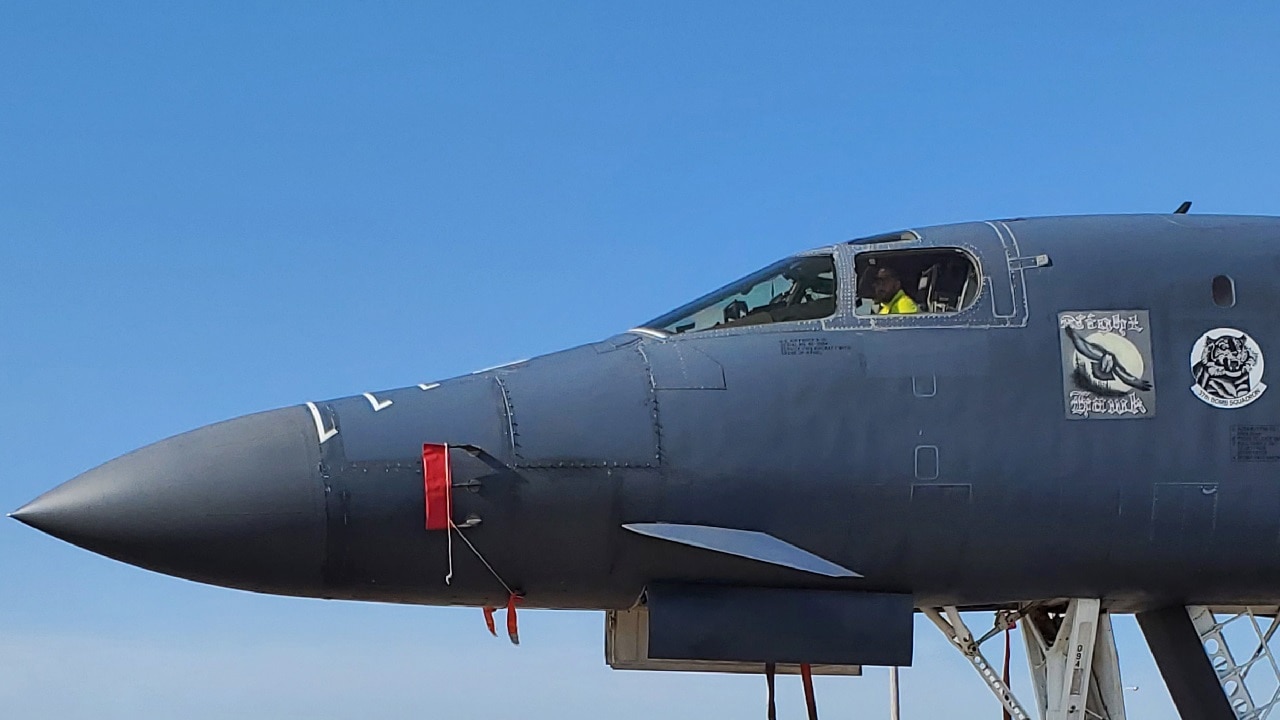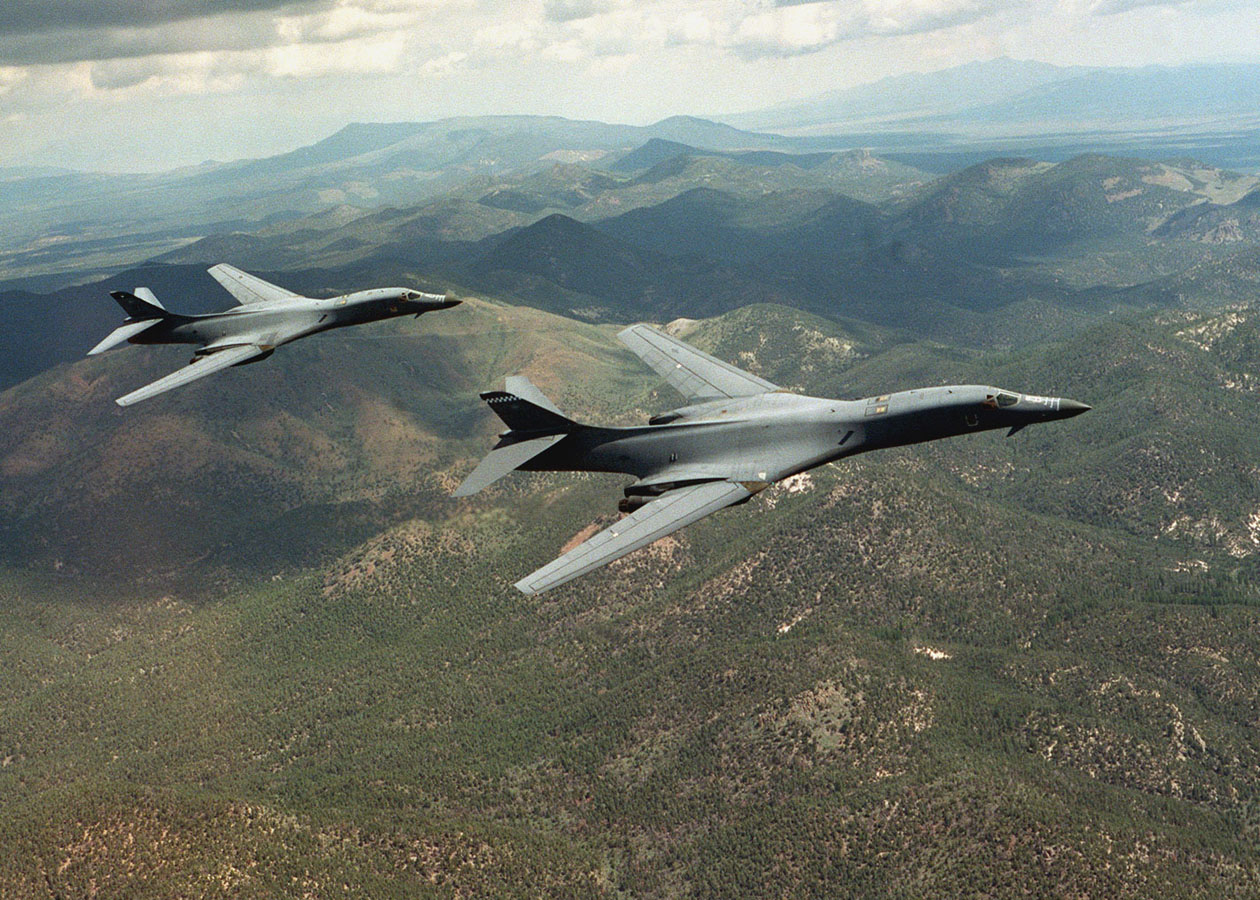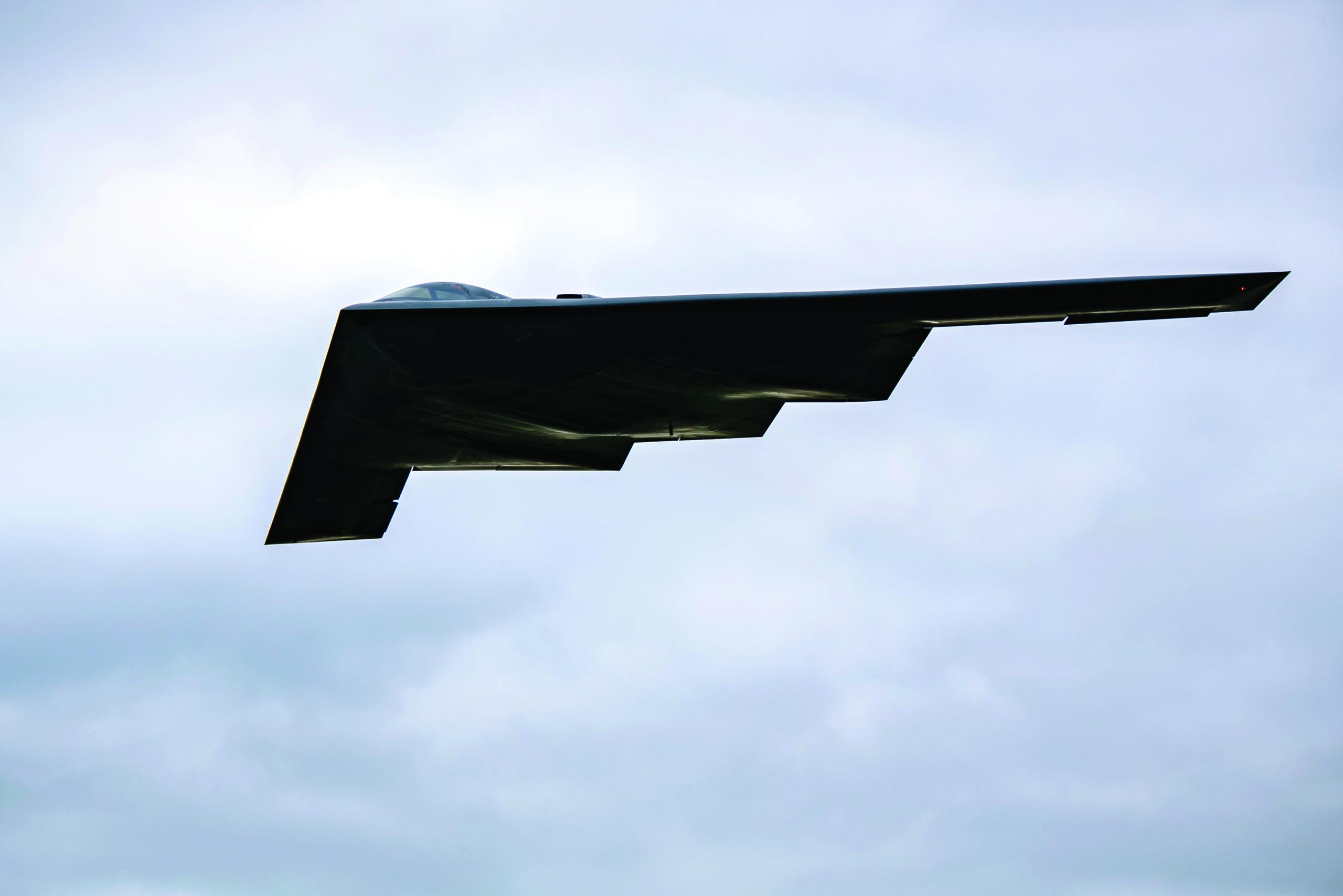B1 Bomber Speed - A supersonic variable-sweep wing, heavy bomber used by the United States Air Force. It is often called "Bone" (from "B-one").
It is one of three strategic bombers in service in the US Air Force fleet by 2022, along with the B-2 Spirit and B-52 Stratofortress.
B1 Bomber Speed

The B-1 was first envisioned in the 1960s as a platform to combine the Mach 2 speed of the B-58 Hustler with the range and payload of the B-52, and was intended to eventually replace both bombers. After a long series of studies, Rockwell International (now part of Boeing) won a design competition for what became the B-1A. This version has a speed of Mach 2.2 at high altitude and a long range flight capability of Mach 0.85 at very low altitude. A combination of the high cost of the aircraft, the introduction of the AGM-86 cruise missile that flew at the same basic speed and distance, and early work on the B-2 stealth bomber reduced the need for the B-1 . The program was canceled in 1977 after the B-1A prototypes were built.
Northrop Grumman B 21 Raider
The program was restarted in 1981, as an interim measure due to delays in the B-2 stealth bomber program. The design of the B-1A was changed, the top speed at high altitude was reduced to Mach 1.25, the low altitude speed was increased to Mach 0.96, the electronic components were greatly improved, and the airframe was upgrade to carry more fuel and weapons. Designated the B-1B, deliveries of the new variant began in 1986; The aircraft entered formal service with the Strategic Air Command (SAC) in the same year as a nuclear bomber. By 1988, all 100 aircraft had been delivered.
With the destabilization of SAC and its reassignment to Air Combat Command in 1992, the B-1B was converted for the conventional bomber role. It first served in combat during Operation Desert Fox in 1998 and during NATO's action in Kosovo the following year. The B-1B supports US and NATO military forces in Afghanistan and Iraq. By 2021 the Air Force will have 45 B-1Bs.
The Northrop Grumman B-21 Raider will begin replacing the B-1B after 2025; All B-1s are scheduled to be retired by 2036.
In 1955, the USAF issued requirements for a new bomber that would combine the payload and range of the Boeing B-52 Stratofortress with the Mach 2 top speed of the Convair B-58 Hustler.
The B 1b Lancer: 20 Years Of Global Power > U.s. Strategic Command > News Article View
In December 1957, the USAF selected for this role North American Aviation's B-70 Valkyrie, a six-engine bomber capable of cruising at high altitudes (70,000 ft or 21,000 m) at Mach 3.
The Valkyrie is expected to fly at the same altitude, but at a higher speed and be outflanked by fighters.
The XB-70 Valkyrie was chosen to replace the Hustler in 1957, but suffered as a result of the change in doctrine from high altitude to low altitude flying profiles.

The USAF Strategic Air Command (SAC) was aware of these developments and began moving its bombers into low-level penetration before the U-2 incident. This technique can greatly reduce the radar detection distance by using terrain camouflage; Using terrain features such as hills and valleys, the line of sight from the radar to the bomber can be broken, invisible to the radar (and human observers).
Faizan Ahmad: B 1b Lancer
In addition, weather radars are subject to "scattering" from stray returns from the ground and other objects, which means there is a minimum angle above the horizon at which they can detect a target. Bombers flying at low altitudes can stay below these angles by keeping distance from the radar sites. The combination of these effects made SAMs at the time ineffective against low-flying aircraft.
The same effects make low-flying aircraft difficult to detect by high-flying interceptors, since their radar systems cannot easily pick out the aircraft against the clutter from ground reflections (lack of to look down / shooting capabilities).
The transition from high altitude to low altitude flight profiles severely affected the B-70, whose design was optimized for high altitude performance. The high aerodynamic drag at low levels limited the B-70 to subsonic speeds and dramatically reduced its range.
The result was an aircraft with a higher subsonic speed than the B-52, but a shorter range. Because of this, and the growing transition to an intercontinental ballistic missile (ICBM) force, the B-70 bomber program was launched in 1961 by President John F.
Take A Look At This Epic Video Of A B 1 Bomber Performing A High Speed Flyby At Oshkosh
Although never intended for a low-level role, the flexibility of the B-52 allowed it to surpass its natural successor as the nature of air warfare changed. The B-52's larger fuel load allowed it to operate at lower altitudes for longer periods, and the larger airframe allowed for better radar jamming and deception suites to counter. the radars.
During the Vietnam War, the concept that all future wars would be nuclear, and the "big belly" modifications increased the total bomb load of the B-52 to 60,000 pounds (27,000 kg).
Transforming it into a powerful tactical aircraft, it can be used against ground forces as well as strategic targets from high altitudes.

The B-70's smaller bomb bay is less useful in this role.
Why All Of America's Enemies Should Still Fear The B 1 Bomber
Although effective, the B-52 was not suitable for the low-level role. This led to a number of aircraft designs known as Petraters, which were specifically adapted for long range low altitude flight. The first of these designs to see operation was the supersonic F-111 fighter-bomber, which used variable-sweep wings for tactical missions.
The first strategic bomber study after the B-70, called the Subsonic Low-Altitude Bomber (SLAB), was completed in 1961. It produced a design that looked more like an airplane than a bomber. , with a large swept wing, T.-tail, and large high-bypass genes.
It was followed by the similar Extended Range Strike Aircraft (ERSA), which added a variable-sweep wing, which was the trend in the aviation industry. ERSA flew the relatively small aircraft at low altitude with a range of 10,070 miles (16,210 km), including a 10,000-pound (4,500 kg) payload and a range of 2,900 miles (4,700 km). In August 1963, a similar low-altitude Petrartor design was completed, calling for an aircraft with a 20,000-pound (9,100 kg) bomb load and a slightly shorter range of 8,230 miles ( 13,240 km). .
All this culminated in the Advanced Manned Precision Strike System (AMPSS) in October 1963, which led to studies by Boeing, General Dynamics and North American industry.
B 1b Lancer: The Old Missile Truck Bomber That Just Won't Die
In mid-1964, the USAF revised its requirements and renamed the project Advanced Manned Strategic Aircraft (AMSA), as distinct from AMPSS, which also demanded high-speed, high-altitude capability. similar to current Mach. 2-Class F-111.
Given the LGT series of design studies, Rockwell Jr. joking that the new name is actually "America's most studied aircraft."
The arguments that led to the cancellation of the B-70 program led some to question the need for any new strategic bomber. The USAF is adamant about keeping the bombers as part of the nuclear triad concept, which consists of bombers, ICBMs, and submarine-launched ballistic missiles (SLBM) in an integrated package that complicates any potential defense. . He argued that the bomber was needed to attack difficult military targets and provide a safe counterforce option because bombers could be easily launched into safe areas where they could not be attacked. However, the introduction of the SLBM underscored the argument for mobility and survivability, and a new generation of ICBMs such as the Minuteman III have the accuracy and speed needed to attack point targets. Currently, ICBMs are the least expensive option based on their low unit cost,

Defense Secretary Robert McNamara preferred ICBMs to bombers for the Air Force's part of the deterrent force.
Bad To The Bone: Fun Facts About The Boeing (rockwell) B 1b Lancer
McNamara opposed the program in favor of upgrading the existing B-52 fleet and adding about 300 FB-111s for the short-term roles filled by the B-58.
President Richard Nixon reestablished the AMSA program after taking office, maintaining his administration's flexible response strategy and requiring a broader range of nuclear war options.
Nixon's Secretary of Defense, Melvin Laird, reviewed the programs and decided to reduce the number of FB-111s, because they lacked the desired range, and recommended that AMSA speed up the design studies.
This was the first attempt at a new bomber designation series developed in 1962. The Air Force issued a request for proposals in November 1969.
B 3: The Inside Story Of America's Next Bomber
The original program called for two test airframes, five flyable aircraft and 40 Gaines. It was cut to one ground and three flight test aircraft in 1971.
The company changed its name to Rockwell International and named its aircraft division North American Aircraft Operations in 1973.
A fourth prototype built to production standards was ordered in the fiscal year 1976 budget. Plans called for 240 B-1As to be built, with initial operational capability set for 1979.

Rockwell's design shares common features with the General Dynamics F-111 Aardvark and the North American XB-70 Valkyrie. It uses a crew escape capsule, which is ejected as a unit to improve crew survival if the crew needs to leave the aircraft at high speed. Additionally, the design features large variable-sweep wings to provide both
Air Force Plans To Retire B 1b Bombers Include Using One As Test Lab
B1 bomber, b1 bomber poster, b1 bomber model, revell b1 bomber, b1 lancer bomber, b1 bomber model kit, youtube b1 bomber, rc b1 bomber, b1 bomber top speed, b1 bomber in action, air force b1 bomber, b1 bomber pictures
0 Comments